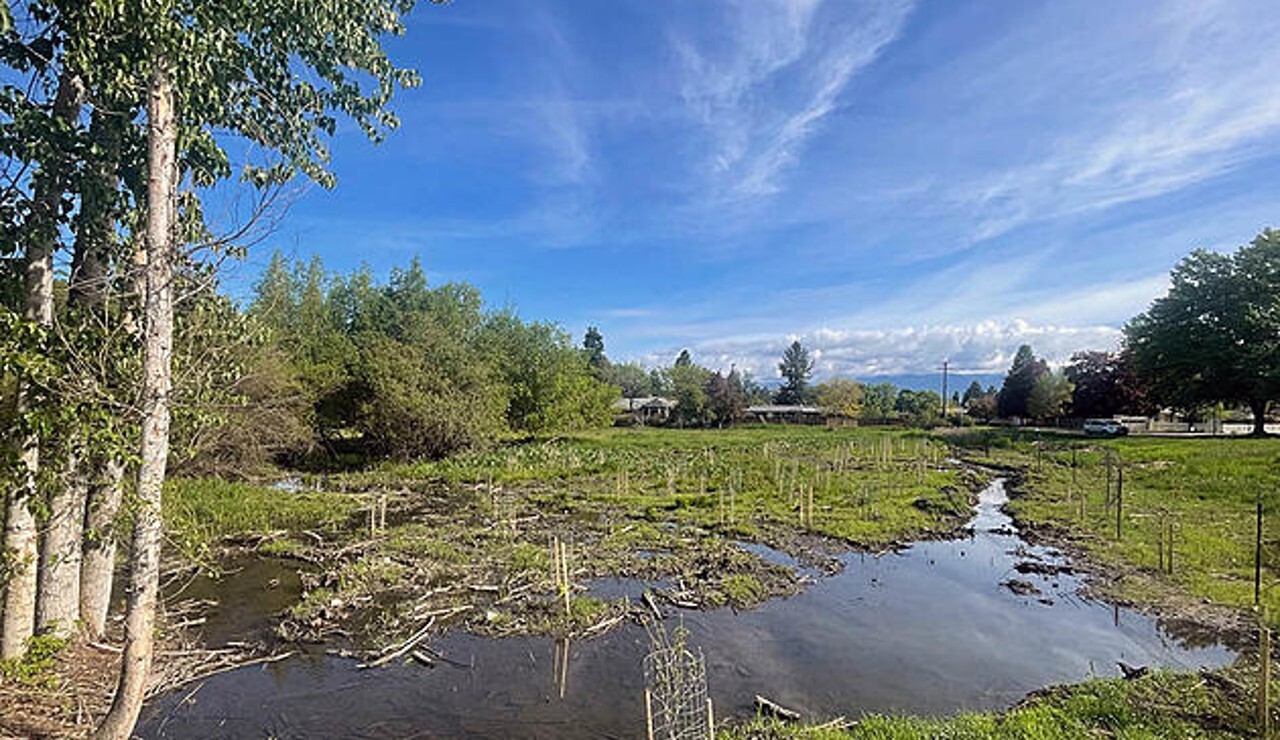MISSOULA - Cost and water quality improvements drive the state of Montana’s recommendations for Missoula’s plan to improve stormwater drainage for the South Hills.
Last week, the Montana Department of Environmental Quality (DEQ) issued an environmental assessment with its preferred recommendations for how the city of Missoula should improve stormwater drainage from the South Hills, given the amount of grant money available.
The public has until Feb. 22 to read the assessment and comment on any changes people would like to see. If nothing unusual is brought up, construction should occur between April and October.
The South Hills stormwater system has to drain an area of almost 15 square miles but has been found lacking in recent decades, as more urban development covered the slopes and natural springs popped up as the result of earthquakes in 2016 and 2020.
Snowmelt and rainwater have at times overflowed existing curbs and stormwater drains, leading to icy patches and property damage.
A year ago, the Missoula City Council approved a nearly $400,000 service agreement with WGM Group to come up with a plan to capture more of the water and divert it into the city's stormwater system. DEQ had to evaluate the plan because the state oversees Missoula’s stormwater discharge permit.
The South Hills stormwater is eventually dumped into the Bitterroot River, and improvements are needed to keep more pollution out of the river. Apart from the Bancroft Ponds and Cattail Corner stormwater facilities, there is currently little water quality treatment.
DEQ looked at Missoula’s three-phase plan and determined the optimal alternatives based on performance and cost.
The stormwater plan
Phase 1 addresses stormwater along Grandview Way, where the natural springs have caused significant ice formation on the road, which poses safety hazards.
To deal with that, new street drains would be added and new stormwater main pipes would be extended up Morning Side Court and Rita Court. Finally, the city will install a hydrodynamic separator where the stormwater drain meets the detention pond. Hydrodynamic separators are newer devices that can clean water by separating all but the smallest particles from the stormwater.
The total capital cost for Phase 1 is $530,000.

Phase 2 addresses the stormwater issues along Gharrett Street, where water has regularly flooded the road during large storm events, causing property damage to private property such as the Lighthouse Baptist Church.
Of the three options considered, DEQ initially chose the most extensive, where a water main would be extended about eight or nine blocks along Gharrett Street from Cardinal Drive south to 55th Street.
However, that along with other modifications would have caused Missoula’s three-phase proposal to exceed the federal American Rescue Plan grant amount. The city of Missoula’s grant application requested $4 million, but only $2 million was awarded.
So DEQ recommends a less extensive option - costing $916,000 - that installs a water main only about a fourth as far, extending from Cardinal Drive two blocks to Arcadia Drive. Above Arcadia Drive, the roadway is steeper, so conveyance structures would be added to guide the water downhill to the new water main.
Also another hydrodynamic separator would be installed to clean the water before it enters the larger main at Cardinal Drive.
Finally, Phase 3 would expand the South Hills infiltration capacity or its ability to handle stormwater overflow. Currently, Missoula uses two open-space areas where water can collect and settle into the groundwater. It also uses smaller dry wells spaced at various intervals along a street where the water can collect and diffuse from wells several dozen feet deep.
However, dry wells can fail as they clog with sediment.
The Paxton Injection Gallery has a number of dry wells that only come into play during high-water events. Meanwhile, the wetland at Cattail Corner near the intersection of Russell and 39th streets receives and processes water constantly, but during high water events, some of the stormwater remains in the mains to be dumped directly into the Bitterroot River.
The DEQ decided that $ 772,000 worth of upgrades to Cattail Corner would be the most effective at improving water quality and open space. Those upgrades would include surrounding the wetland with dry wells at a higher level such that they receive water only during high-water events.
The wetland has filled with sediment and cattails over the past 20 years, so the sediment would be removed to provide for better water absorption and the remaining soil would be graded to encourage a larger diversity of wetland plants to encourage better functioning.
“The three phases of stormwater improvements will result in increased stormwater capacity and treatment to handle large runoff events and better stormwater quality in the discharge to the Bitterroot River,” wrote Mike Abrahamson, DEQ Water Quality Section supervisor, in the finding.


